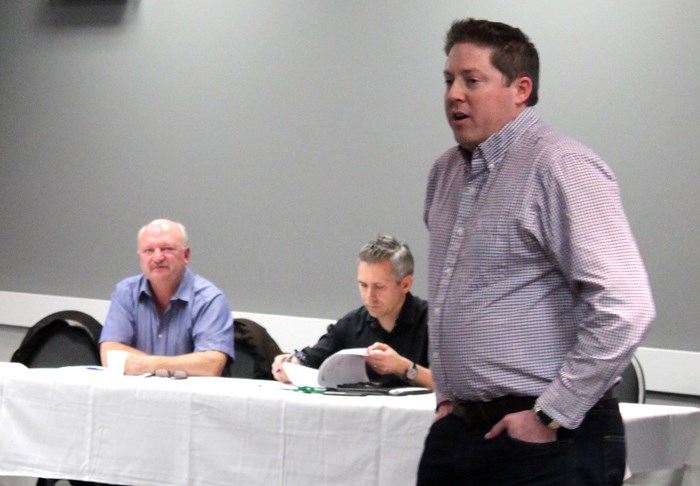As Saskatchewan moves toward spring, attendees of an R.M. of Orkney ratepayers meeting March 1 received an overview of the provincial Agriculture Water Management Strategy.
Aaron Hershmiller, manager of East Central Regional Services for the Saskatchewan Water Security Agency (WSA) outlined the plan starting with the basic premise that all drainage must be controlled to mitigate downstream impacts.
Hershmiller stressed the fact that all drainage works—ditches, culverts, pumping tile etc.—must be approved. And that includes pre-1981 works. There is no grandfathering, he said, because regardless of age a poorly designed drainage work can cause negative downstream impacts to water quantity, water quality and habitat.
“Drainage is not a right, it is a privilege,” he said.
Turning to particular local concerns, Hershmiller advised that the approval process requires land control to the “point of adequate outlet.” That means landowners must work together on easements, joint applications and landowner-to-landowner agreements.
To facilitate this six watershed associations in the East Central Region, including the Assiniboine Watershed Stewardship Association here in Yorkton, have Qualified Persons (QPs) to provide direct assistance to landowners.
Residents shared concerns about the City of Yorkton discharging flood waters into the R.M., but Hershmiller said the City generally does not discharge to the R.M. because it has its own collection areas for flood water. If it does, however, it works with the WSA to drain the water to a point of adequate outlet.

